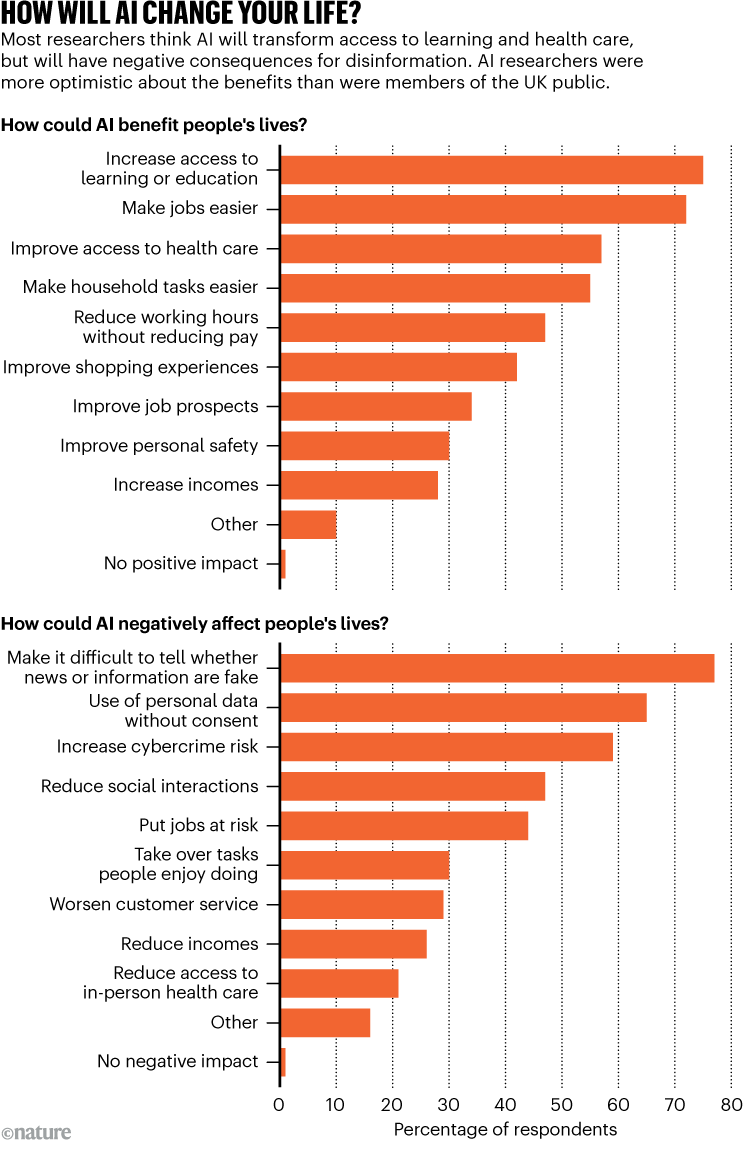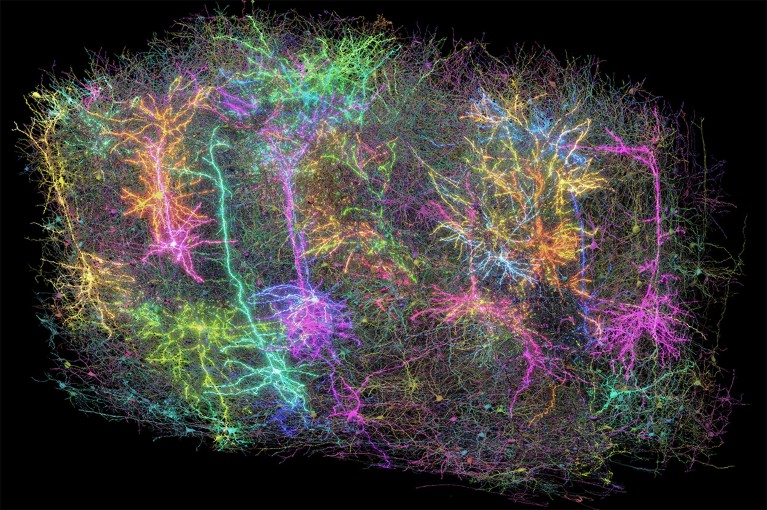You have full access to this article via your institution.
Hello Nature readers, would you like to get this Briefing in your inbox free every day? Sign up here.

Conservation of critically endangered Bornean orangutans could be aided by the sequencing of the creature’s genome.Credit: Fiona Rogers/Nature Picture Library
After more than two decades of work, researchers have sequenced the complete genomes of six ape species. An understanding of the apes’ genomes gives geneticists insights into the genetic factors that differentiate humans from our animal cousins. The results will also be key to analysing the genetic diversity of at-risk ape populations — all six species sequenced are listed as either endangered or critically endangered. “I’ve never thought that this would be accomplished in my lifetime,” says evolutionary geneticist and study co-author Kateryna Makova.
Nature | 4 min read
Reference: Nature paper
Human brain cells engineered to evade detection by the immune system have successfully restored muscle control in a rat model of Parkinson’s disease. Researchers altered eight genes in a line of human stem cells to increase their activity so they acted as an immune ‘invisibility cloak’. The cells then differentiated into nerve cells suitable for treating Parkinson’s disease. The study is a step towards the development of a ‘universal’ cell line that can be transplanted into anyone, to cure a raft of conditions — from type 2 diabetes to blindness — without the need for anti-rejection drugs.
Nature | 4 min read
Reference: Cell Stem Cell paper
54% of 4,260 global researchers who responded to a survey believe that artificial intelligence (AI) will bring more benefits to society than risks. That makes them seemingly a lot more optimistic than the general public: for example, in a similar survey just 13% of the UK public shared the same rosy view. The two groups’ views were more aligned on the technology’s role in disinformation, data use and cybercrime: 77% of researchers and 68% of the UK public said that AI makes misinformation a problem. The survey’s most striking finding is that fewer than one-third of AI scientists think that the technologies should be developed as quickly as possible, says Robert Trager, director of the Oxford Martin AI Governance Initiative. “They seem to want a more considered approach to development to mitigate risks.”
Nature | 5 min read
Reference: Zenodo preprint (not peer reviewed)

Source: Ref. 1
Features & opinion
The past decade has seen the development of a class of drugs that effectively induces sleep with fewer side effects and a lower risk of dependence compared with other sleep aids. Dual orexin receptor antagonist (DORA) drugs approved in the United States include suvorexant (sold as Belsomra), lemborexant (Dayvigo) and daridorexant (Quviviq). “The beauty of it is it does nothing but block the stimulation of wakefulness,” says neurologist Joe Herring.
But DORA therapies are available only in a few countries, and their high cost keeps them out of reach of many people who could benefit from them. “I’m aware that each pill I pop before bed is about the same price as ordering a fancy cocktail,” writes journalist Rachel Nuwer, who is trying the treatment after learning about it while reporting the story.
Nature | 12 min read & Nature | 7 min read
These editorially independent articles are part of Nature Outlook: Sleep, a supplement produced with financial support from Avadel Pharmaceuticals.

Credit: Alisdair Macdonald
“Our beloved pet dogs have a far greater, more insidious and more concerning effect on wildlife and the environment than we would like to be the case,” write behavioural ecologists Bill Bateman and Lauren Gilson. Pets attack wildlife, disturb habitats with their scent and droppings, shed toxic flea treatments, consume vast amounts of meat and produce equivalent volumes of waste. But dog owners can do a lot to ameliorate these downsides, Bateman says. Follow leash laws, don’t let your pooch chase animals, always pick up its poo and consider buying sustainable dog food, he suggests.
The Conversation | 5 min read
Reference: Pacific Conservation Biology paper
Image of the week

A rendering of more than 1,000 brain cells out of the those reconstructed from analysis of a cubic millimetre of brain tissue from a mouse. Credit: Allen Institute
Researchers have created the largest and most detailed wiring diagram of a mammalian brain to date, by mapping cells in a cubic millimetre of a mouse’s brain tissue. The high-resolution 3D map contains more than 200,000 brain cells, around 82,000 of which are neurons. It also includes more than 500 million of the neuronal connection points called synapses and more than 4 kilometres of neuronal wiring, all found in a tiny block of tissue in a brain region involved in vision. (Nature | 5 min read)
The map is the result of the Machine Intelligence from Cortical Networks (MICrONS) project, who described their work in a package of eight papers published in Nature and Nature Methods.
Today I’m considering how to protect my favourite desk here at Nature HQ. One option is to perhaps buzz like the warty birch caterpillar. At less than two millimetres long, the larvae of the two-lined hooktip moth (Falcaria bilineata) are small, but mighty, and will vibrate their bodies on the tips of leaves to ward off competitors. It seems to work for these critters, at least about 70% of the time, so I might give it a try.
If you have other suggestions, or ideas of how we can improve this newsletter, please send them to briefing@nature.com.
Thanks for reading,
Jacob Smith, associate editor, Nature Briefing
With contributions by Flora Graham
Want more? Sign up to our other free Nature Briefing newsletters:
• Nature Briefing: Careers — insights, advice and award-winning journalism to help you optimize your working life
• Nature Briefing: Microbiology — the most abundant living entities on our planet — microorganisms — and the role they play in health, the environment and food systems
• Nature Briefing: Anthropocene — climate change, biodiversity, sustainability and geoengineering
• Nature Briefing: AI & Robotics — 100% written by humans, of course
• Nature Briefing: Cancer — a weekly newsletter written with cancer researchers in mind
• Nature Briefing: Translational Research — covers biotechnology, drug discovery and pharma


